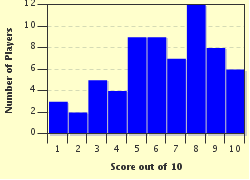Quiz Answer Key and Fun Facts
1. In order to complete the calculations Suzie wants to make about her activities, she needs to know her mass. Exactly what property does her mass measure?
2. In preparation for performing a spin turn, Suzie was practising her pirouettes (not easy for a seal at the best of times), and wondered how she could make herself spin as fast as possible. Which of these suggestions would be most effective?
3. Enough spinning, it's time for Suzie to practice her sprints - you never know when a seal's going to need to swim away in a hurry! Suzie is planning to work on getting up to her top speed as quickly as possible. What word describes what her coach will measure to describe how quickly she changes from a standing start to top speed?
4. Because Suzie is swimming as quickly as she can, she feels as if she is putting a lot of effort into the session. Physicists say that she is doing work. Which of these is the SI unit used to measure work?
5. If Suzie has been doing work as she starts her sprint, then she must be gaining some form of energy. Which of these is the primary type of energy that she is gaining?
6. Suzie thought the work would be done once she was swimming at full speed, but she discovered that if she stopped working, she would slow down and eventually stop. So if she isn't going any faster, where is this work going?
7. Suzie decides to take a breather, and let herself glide to a stop. Given that she had 300J of kinetic energy as she was swimming at her top speed of 2 m/s, that is how much energy she will lose as she glides to a stop. The work done to make this happen can be calculated as the average retarding force multiplied by the distance taken. If she takes 50 metres to come to rest, what is the average retarding force acting on her?
8. Suzie's swimming coach keeps telling her to maintain her momentum in the water. What exactly is momentum (to a physicist, not necessarily as a sport coach uses it), anyway?
9. Suzie saw her best friend Sammy, and excitedly raced towards him as he swam towards her. She misjudged the distance, and ran into him before she could come to a stop. The two of them ended up stationary in the water, laughing at her foolishness. Was this an example of an elastic collision?
10. Suzie's swimming coach urged her to put more power into her swimming. From the perspective of a physicist, what does power measure?
Source: Author
looney_tunes
This quiz was reviewed by FunTrivia editor
rossian before going online.
Any errors found in FunTrivia content are routinely corrected through our feedback system.

